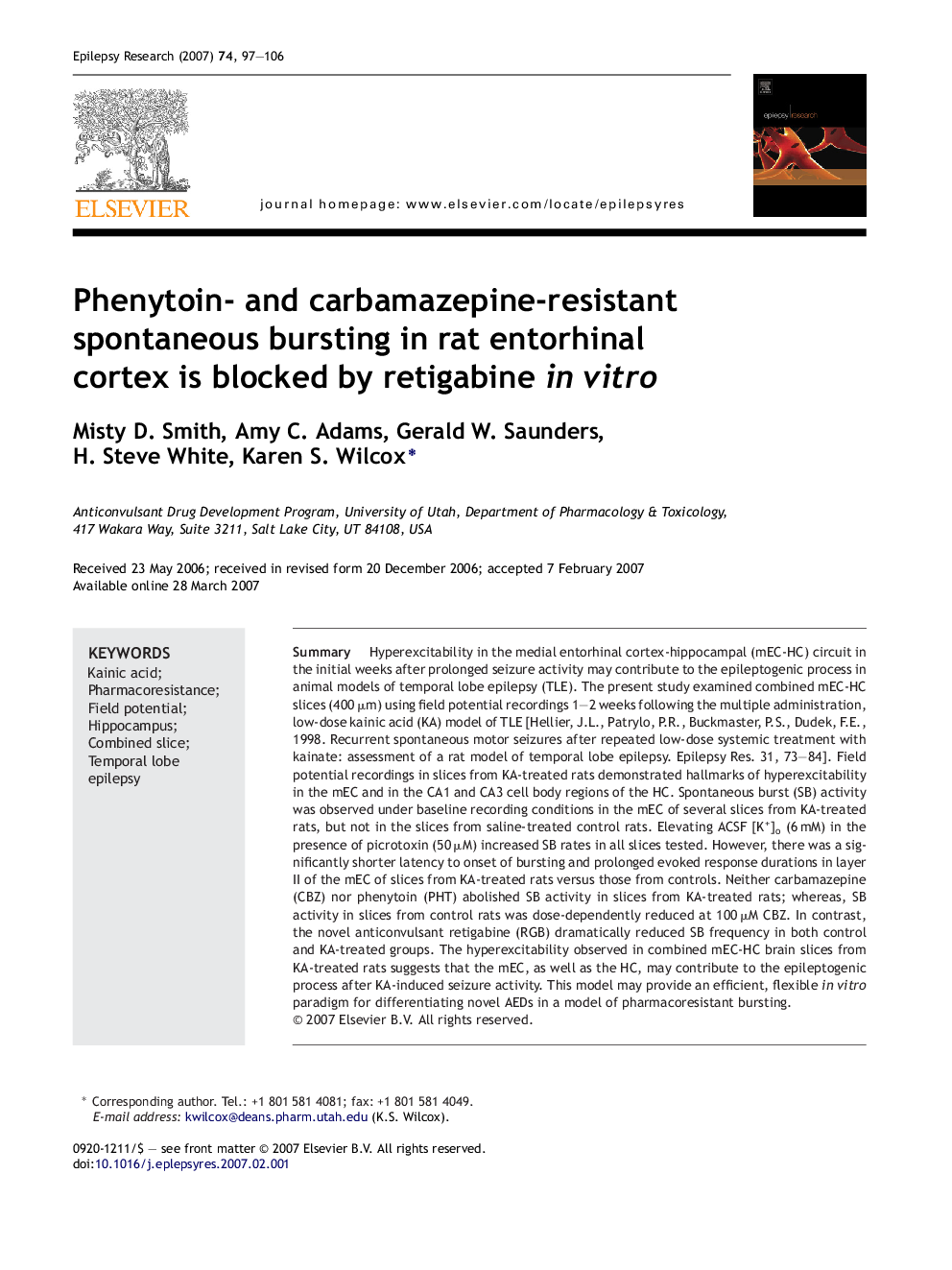| Article ID | Journal | Published Year | Pages | File Type |
|---|---|---|---|---|
| 3053068 | Epilepsy Research | 2007 | 10 Pages |
SummaryHyperexcitability in the medial entorhinal cortex-hippocampal (mEC-HC) circuit in the initial weeks after prolonged seizure activity may contribute to the epileptogenic process in animal models of temporal lobe epilepsy (TLE). The present study examined combined mEC-HC slices (400 μm) using field potential recordings 1–2 weeks following the multiple administration, low-dose kainic acid (KA) model of TLE [Hellier, J.L., Patrylo, P.R., Buckmaster, P.S., Dudek, F.E., 1998. Recurrent spontaneous motor seizures after repeated low-dose systemic treatment with kainate: assessment of a rat model of temporal lobe epilepsy. Epilepsy Res. 31, 73–84]. Field potential recordings in slices from KA-treated rats demonstrated hallmarks of hyperexcitability in the mEC and in the CA1 and CA3 cell body regions of the HC. Spontaneous burst (SB) activity was observed under baseline recording conditions in the mEC of several slices from KA-treated rats, but not in the slices from saline-treated control rats. Elevating ACSF [K+]o (6 mM) in the presence of picrotoxin (50 μM) increased SB rates in all slices tested. However, there was a significantly shorter latency to onset of bursting and prolonged evoked response durations in layer II of the mEC of slices from KA-treated rats versus those from controls. Neither carbamazepine (CBZ) nor phenytoin (PHT) abolished SB activity in slices from KA-treated rats; whereas, SB activity in slices from control rats was dose-dependently reduced at 100 μM CBZ. In contrast, the novel anticonvulsant retigabine (RGB) dramatically reduced SB frequency in both control and KA-treated groups. The hyperexcitability observed in combined mEC-HC brain slices from KA-treated rats suggests that the mEC, as well as the HC, may contribute to the epileptogenic process after KA-induced seizure activity. This model may provide an efficient, flexible in vitro paradigm for differentiating novel AEDs in a model of pharmacoresistant bursting.
